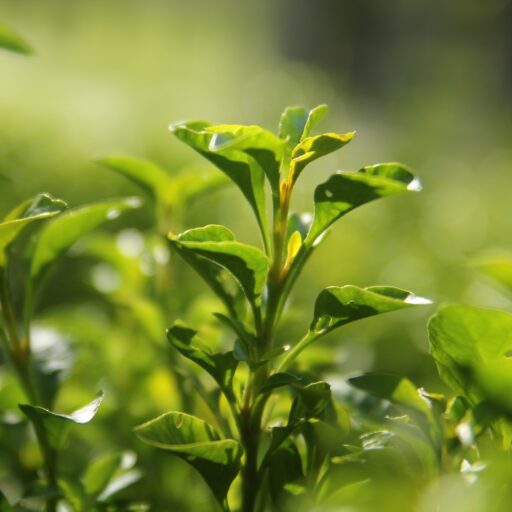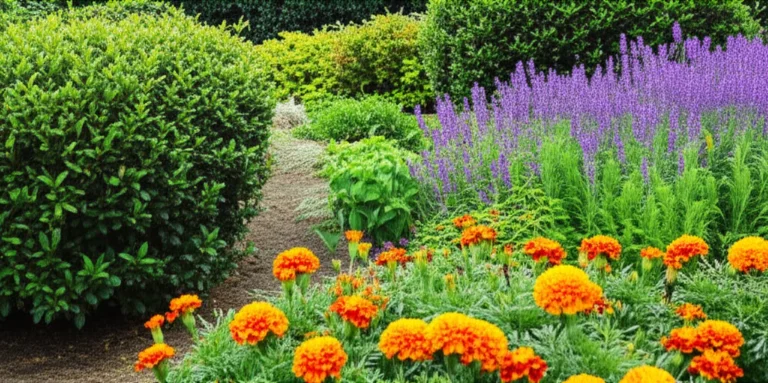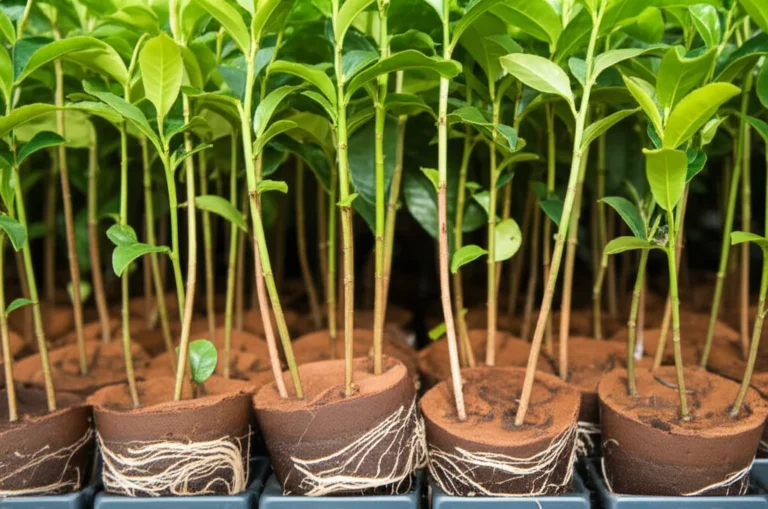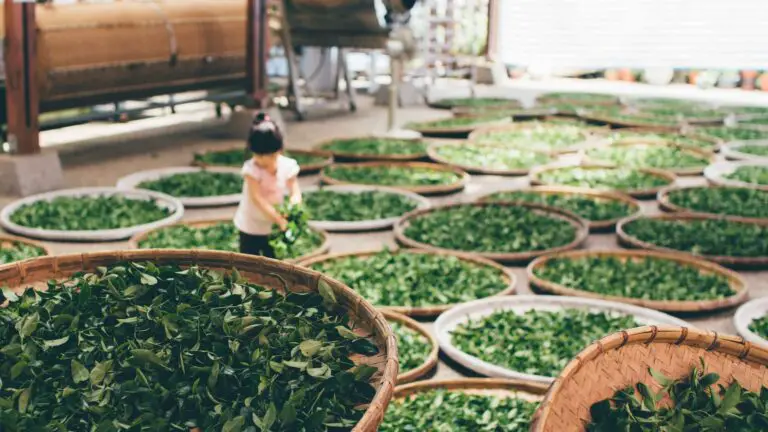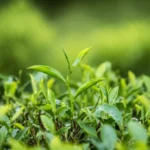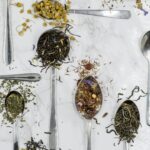Support our educational content for free when you purchase through links on our site. Learn more
What Tea Can You Grow at Home? 7 Must-Have Plants for 2025 🍃

Imagine sipping a fresh cup of tea brewed from leaves you lovingly nurtured right in your own backyard—or even on your sunny windowsill. Growing your own tea isn’t just a dream for tea aficionados; it’s a rewarding, hands-on way to connect with centuries-old traditions and create personalized blends bursting with flavor. But what tea can you actually grow at home? Spoiler alert: it’s not just Camellia sinensis—there’s a whole garden of possibilities!
In this guide, we’ll walk you through 7 incredible tea plants you can cultivate indoors or outdoors, from the classic tea bush to aromatic herbs like mint and chamomile. We’ll share insider tips on soil, light, watering, and even how to process your leaves into delicious tea. Curious about tea flowers and their secret uses? Or wondering how long it takes before you can harvest? Stick around—we’ve got all the answers brewed just for you.
Key Takeaways
- You can grow both true tea (Camellia sinensis) and a variety of herbal teas at home, expanding your tea garden beyond the ordinary.
- Patience is key: expect to wait at least three years before harvesting leaves from your tea bush for the best flavor and plant health.
- Optimal growing conditions include acidic, well-draining soil and plenty of sunlight, though shade preferences vary by climate.
- Herbal tea plants like mint, lemon verbena, and chamomile are beginner-friendly and add delightful flavors to your home blends.
- Processing your own tea leaves at home is easier than you think—with simple steps to create green or black tea from your harvest.
- Tea flowers aren’t just pretty—they make a soothing, caffeine-free infusion you won’t want to miss!
Ready to start growing? Check out our curated selection of Camellia sinensis plants and herbal tea growing kits to get your tea garden brewing!
Table of Contents
- ⚡️ Quick Tips and Facts About Growing Tea at Home
- 🌱 The Fascinating Origins and History of Tea Cultivation
- 🍃 Can You Really Grow Tea Plants at Home? Our Expert Take
- 1. 🌿 Top 7 Tea Plants You Can Grow Indoors and Outdoors
- 2. 🌞 How Much Light Does Your Tea Plant Need to Thrive?
- 3. 🌎 Choosing the Perfect Soil Mix for Growing Tea at Home
- 4. 💧 Watering Wisdom: How Much Water Does a Tea Plant Crave?
- 5. 📏 Spacing Secrets: How Far Apart Should Tea Plants Be Planted?
- 6. ⏳ Patience Pays: How Long Does It Take for Tea Plants to Grow?
- 7. 🌸 Tea Flowers: What Are They and How Can You Use Them?
- 🛒 Where to Buy Quality Tea Plants and Seeds for Your Garden
- 🍵 DIY Guide: How to Process Your Homegrown Tea Leaves into Delicious Tea
- 🌿 Troubleshooting Common Problems When Growing Tea at Home
- 🧑🌾 Pro Tips from Growing Teas™: Secrets to Thriving Tea Plants
- 💬 Leave a Comment: Share Your Tea Growing Adventures!
- 🤝 Let’s Connect: Join Our Tea Growing Community
- 🛍️ Shop and Explore: Essential Tools and Supplies for Tea Cultivation
- 📚 Recommended Links for Further Tea Growing Mastery
- ❓ FAQ: Your Burning Questions About Growing Tea at Home Answered
- 🔗 Reference Links: Trusted Sources and Further Reading
- 🏁 Conclusion: Your Journey to Homegrown Tea Mastery
Here is the main content for your blog post, crafted by the experts at Growing Teas™.
⚡️ Quick Tips and Facts About Growing Tea at Home
Welcome, fellow tea enthusiasts! We’re the growers at Growing Teas™, and we’re absolutely thrilled to spill the tea on, well, growing tea! You’ve asked the question, and we’re here to shout it from the rolling hills of our plantations: YES, you can absolutely grow your own tea at home! Before we dive deep into the soil, let’s get you started with some fascinating tidbits. And if you’re wondering about cultivating other aromatic plants, you might find our insights on Is It Worth Growing Your Own Herbs? 8 Surprising Reasons (2025) 🌿 quite revealing.
Here’s a quick brew of what you need to know:
| Quick Fact 💡 | The Juicy Details |
|---|---|
| The “True” Tea Plant | All traditional teas (Black, Green, Oolong, White) come from just one amazing plant: Camellia sinensis. The incredible variety comes from how the leaves are processed after harvesting! |
| Patience is a Virtue | Don’t expect to be sipping your own homebrew right away. As the folks at Young Mountain Tea note, “You shouldn’t harvest leaves from your plant until it is at least three years old.” This gives your plant time to get strong and established. |
| Acidic Soil is Key | Your tea plant is a bit of a diva about its soil. It craves acidic (ericaceous) soil with a pH between 4.5 and 6.0 to truly thrive. |
| Herbal “Teas” Galore | Beyond Camellia sinensis, there’s a whole universe of herbs you can grow for delicious infusions (technically called ’tisanes’). Think mint, chamomile, and lemon balm! |
| A Long-Term Friend | A well-cared-for tea bush isn’t just a plant; it’s a legacy. It can live for 50 years or even longer, providing you with fresh leaves for decades. |
| Sun Worshipper | Tea plants generally love the sun. They grow best in sites with full sun, so don’t tuck them away in a fully shaded corner of your garden. |
🌱 The Fascinating Origins and History of Tea Cultivation
Ever wonder how this whole tea thing started? Let’s take a quick trip back in time. Legend has it that in 2737 BC, the Chinese emperor Shen Nung was chilling under a tree while his servant boiled some drinking water. A few leaves from the tree overhead drifted into the pot, and voilà! The first cup of tea was brewed.
While that’s a charming story, the real History of Tea is a rich tapestry woven through centuries of cultivation, trade, and culture. From its origins in China as a medicinal drink to its journey along the Silk Road and its eventual embrace by the entire world, the story of the humble tea leaf is anything but boring. It’s a tale of monks, merchants, and empires, all centered around this one incredible plant.
🍃 Can You Really Grow Tea Plants at Home? Our Expert Take
Let’s get right to it. When people ask, “What tea can you grow at home?”, they’re usually thinking of one of two things:
- The actual tea plant, Camellia sinensis, the source of all the classic teas we know and love.
- A variety of herbs that can be steeped in hot water to make flavorful “herbal teas” or tisanes.
And the fantastic news is… you can grow BOTH!
✅ Growing Camellia sinensis: Yes, the “true tea plant” can be a happy resident in your garden or even in a pot indoors. It’s a beautiful evergreen shrub with glossy leaves and delicate white flowers. Growing it is a rewarding journey that connects you directly to the ancient tradition of tea making.
✅ Growing Herbal Teas: This is often where home gardeners start. As Eartheasy points out, many herbs like mint, lemon balm, and chamomile are incredibly easy to grow and can provide a continuous supply of fresh leaves and flowers for brewing. It’s a fantastic way to create custom blends right from your backyard.
So, which path will you choose? The ancient Camellia sinensis or a vibrant garden of herbal delights? Or… why not both? Let’s dive into the best plants to get you started on your home-brewing adventure!
1. 🌿 Top 7 Tea Plants You Can Grow Indoors and Outdoors
Ready to get your hands dirty? Here are our top picks for starting your very own tea garden, from the classic to the herbal.
1. The One and Only: Camellia sinensis
This is the star of the show! If you want to make your own green, black, or oolong tea, this is the plant you need.
- What it is: A hardy evergreen shrub that, in cultivation, is usually kept pruned to a manageable hedge of 3-5 feet.
- Varieties to Know:
- Camellia sinensis var. sinensis: A smaller-leafed variety from China that is more tolerant of colder weather. This is the one you’ll likely want for growing in places like the UK or the US Pacific Northwest.
- Camellia sinensis var. assamica: A larger-leafed variety from India that loves tropical climates. It’s less suitable for most home gardens outside of very warm regions.
- Growing Teas™ Tip: Start with the sinensis variety. It’s more forgiving and better suited to a wider range of climates. This is the perfect plant to begin your Green Tea Cultivation journey.
2. The Invigorator: Mint (Mentha spp.)
You can’t go wrong with mint. It’s ridiculously easy to grow—so easy, in fact, that you have to watch out it doesn’t take over your garden!
- What it is: A fast-spreading perennial herb. We recommend growing it in a container to keep it in check.
- Varieties We Love: Peppermint (for that classic, punchy flavor), Spearmint (sweeter and gentler), and Chocolate Mint (yes, it’s a thing, and it’s amazing!).
- Taste Profile: Refreshing, cool, and invigorating. Perfect for a soothing post-dinner brew.
3. The Zesty One: Lemon Verbena (Aloysia citrodora)
If you love citrus, you will fall head over heels for Lemon Verbena. Its intense lemon scent is simply intoxicating.
- What it is: A woody shrub that can get quite tall. It’s a tender perennial, so if you live in a climate with cold winters, you’ll need to bring it indoors.
- Harvesting Tip: For the most potent lemon flavor, harvest the leaves just as the plant is beginning to bloom.
- Taste Profile: A pure, bright, and unapologetic lemon flavor without the acidity of an actual lemon.
4. The Calming Classic: Roman Chamomile (Anthemis nobilis)
There’s a reason chamomile tea is the go-to bedtime brew. Its delicate, apple-scented flowers are the epitome of calm.
- What it is: A low-growing perennial that can be used as a fragrant ground cover.
- What to Harvest: You’ll be harvesting the tiny, daisy-like flowers for your tea. It’s a bit of work, but oh-so-worth-it.
- Taste Profile: Mild, slightly sweet, with hints of apple. It “pairs well with mints for a soothing, nighttime brew.”
5. The Aromatic Powerhouse: Rosemary (Rosmarinus officinalis)
Rosemary in tea? Absolutely! It’s not just for roasting chickens.
- What it is: A woody, evergreen herb that loves sunny, dry conditions. It’s incredibly drought-tolerant once established.
- Brewing Tip: A little goes a long way. Start with a small sprig. Eartheasy suggests brewing it “with a little honey and lemon for a bracing start to your day.”
- Taste Profile: Piney, savory, and highly aromatic. It’s a unique and stimulating brew.
6. The Citrus-Mint Hybrid: Bergamot (Monarda didyma)
Also known as Bee Balm, this beautiful flowering plant is a favorite of pollinators and tea lovers alike.
- What it is: A member of the mint family with showy, vibrant flowers.
- What to Harvest: You can use both the leaves and the flowers to make tea.
- Taste Profile: A fascinating mix of minty, spicy, and citrusy notes. It’s the flavor famously associated with Earl Grey tea (though that comes from the bergamot orange, not this plant).
7. The Sweet Surprise: Fennel (Foeniculum vulgare)
For those who enjoy a hint of licorice in their cup, fennel is a must-grow.
- What it is: A tall, feathery herb where the leaves, stalks, and seeds can all be used.
- Brewing Tip: For the most intense flavor, harvest the seeds in the fall and give them a light crush just before steeping. This is a fantastic plant for your Herbal Tea Planting adventures.
- Taste Profile: Sweet, aromatic, with a distinct licorice or anise flavor.
2. 🌞 How Much Light Does Your Tea Plant Need to Thrive?
So, you’ve picked your plant. Now, where do you put it? When it comes to the true tea plant, Camellia sinensis, light is a hot topic. You might see some conflicting advice out there, so let’s clear it up.
Young Mountain Tea says tea plants grow best in full sun. On the other hand, Love The Garden suggests a bright, sheltered position with partial shade. So who’s right?
They both are! It all depends on your climate.
- In Cooler, Overcast Climates (like the UK or Pacific Northwest): ✅ Go for full sun! The sun’s intensity is lower, and your plant will appreciate all the light it can get to become hardy and productive.
- In Hot, Sunny Climates (like the Southern US): ❌ Full, scorching afternoon sun can be too much. In this case, a spot with morning sun and some dappled afternoon shade is perfect. This protects the leaves from getting scorched while still providing plenty of energy for growth.
- Indoors: Find the brightest window you have, typically a south-facing one. If you don’t have enough natural light, a grow light can be a great supplement to keep your tea plant happy.
3. 🌎 Choosing the Perfect Soil Mix for Growing Tea at Home
If light is important, soil is critical. Get this wrong, and your tea plant will throw a tantrum. Camellia sinensis is an acid-loving plant, just like blueberries and rhododendrons.
The Golden Rules of Tea Soil:
- Acidity is Non-Negotiable: You need ericaceous (acidic) soil with a pH between 4.5 and 6.0. If your garden soil is alkaline, your plant’s leaves will likely turn yellow, and it will fail to thrive.
- Drainage, Drainage, Drainage! We can’t say this enough. Tea plants love water, but they absolutely despise “wet feet.” Poor drainage leads to root rot, which is a death sentence. The soil must be free-draining.
Getting the Soil Right:
- In Pots (Recommended for Beginners): This is the easiest way to control the soil. Use a high-quality, peat-free ericaceous compost mix. Brands like Miracle-Gro and Levington make excellent options. Ensure your pot has plenty of drainage holes.
- In the Ground: First, test your soil’s pH. You can get a simple soil test kit online or at any garden center. If your soil is naturally acidic, great! Amend it with some well-aged compost to improve its structure. If it’s not acidic enough, you’ll need to amend it with materials like sulfur or pine bark fines. For very wet sites, consider building a raised bed to ensure perfect drainage.
👉 Shop for Soil Supplies:
4. 💧 Watering Wisdom: How Much Water Does a Tea Plant Crave?
Here’s a fun paradox for you: “Tea plants need at least 60 inches of water per year. They love water, but hate sitting in it…” This quote from Young Mountain Tea perfectly captures the challenge. You need to provide consistent moisture without waterlogging the soil.
Here’s our watering schedule at Growing Teas™:
- For Young Plants (First 2 Years): These babies are thirsty as they establish their root systems. Water them deeply 2-3 times per week during the summer, ensuring the entire root ball gets a good soak.
- For Established Plants (Year 3+): They are more drought-tolerant but will produce more lush new growth (the stuff you harvest!) if you water them regularly during dry spells.
- The Finger Test: The easiest method! Stick your finger about an inch into the soil. If it feels dry, it’s time to water. If it’s moist, hold off for another day or two.
- Potted Plants: Plants in containers dry out much faster than those in the ground, especially on hot, windy days. Check them daily during the summer. Water until you see it running out of the drainage holes at the bottom.
5. 📏 Spacing Secrets: How Far Apart Should Tea Plants Be Planted?
Planning to grow more than one tea plant? Smart move! But how much personal space do they need?
- For a Hedge: If you’re dreaming of a beautiful, pluckable tea hedge, you can plant them closer together, about 1.5 to 3 feet apart. This encourages them to grow into each other.
- For Individual Shrubs: If you want to grow them as individual specimen plants in your garden, give them more room to breathe. Both Young Mountain Tea and Love The Garden agree on a spacing of about 5 feet (or 1.5 meters) apart.
Our Recommendation: For most home gardeners, treating them as individual shrubs and spacing them 5 feet apart is the best approach. This ensures good air circulation, which helps prevent disease, and gives you easy access all around the plant for harvesting.
6. ⏳ Patience Pays: How Long Does It Take for Tea Plants to Grow?
In our instant-gratification world, this might be the toughest part of growing your own tea. You’ve planted your sapling, you’re watering it, you’re singing to it… so when can you harvest?
The expert consensus is clear: You must wait until the plant is at least three years old.
We know, we know! It sounds like an eternity. But think of it this way: for those first three years, your plant is focusing all its energy downward, building a robust and powerful root system. This is the foundation for a long and productive life. If you start plucking leaves too early, you weaken the plant and sacrifice its long-term health and yield.
Trust us, the first cup of tea from your very own three-year-old plant will be the most satisfying drink you’ve ever had. It’s a testament to your patience and care!
7. 🌸 Tea Flowers: What Are They and How Can You Use Them?
Sometime in the fall, you might notice your tea plant producing beautiful, fragrant white flowers with bright yellow centers. They look a lot like their ornamental Camellia cousins. But wait… are flowers a good thing or a bad thing?
- The Commercial Grower’s View: ❌ On a commercial tea farm, flowers are discouraged. Why? Because producing flowers and seeds diverts precious energy away from producing leaves, which are the cash crop.
- The Home Grower’s View: ✅ For you, it’s a different story! The flowers are gorgeous and add ornamental value to your garden. But even better… you can brew them!
That’s right! Tea flowers can be harvested and steeped to create a wonderfully “smooth, sweet, relaxing drink.” It’s a delicate, caffeine-free brew with a honey-like sweetness. It’s one of the secret perks of growing your own tea that most people never get to experience. So go ahead, let your plant flower and enjoy another delicious beverage from your amazing garden.
🛒 Where to Buy Quality Tea Plants and Seeds for Your Garden
Ready to buy your first tea plant? It’s unlikely you’ll find Camellia sinensis at your local big-box garden center, so you’ll probably need to look to specialty nurseries. Here are some reputable sources mentioned by fellow tea growers and our own favorites:
- Camellia Forest Nursery: A fantastic source for a wide variety of camellias, including many different Camellia sinensis cultivars.
- Fast Growing Trees: This online nursery sometimes carries tea plants, and they are known for their healthy, well-packaged plants.
- Minto Island Tea Company: A tea farm in Oregon that occasionally sells saplings to the public. Check their site for availability.
- Oregon Tea Traders: Another Oregon-based source that sometimes offers tea plants.
You can also often find small growers selling tea plants and seeds on platforms like Etsy.
👉 Shop for Tea Plants:
- Camellia Sinensis Plant: Etsy | Camellia Forest Nursery
- Tea Growing Kits: Amazon | Etsy
🍵 DIY Guide: How to Process Your Homegrown Tea Leaves into Delicious Tea
Okay, three years have passed. Your plant is bushy and lush. It’s time for the magic. This is where you, the gardener, become the tea master. The difference between green tea and black tea isn’t the plant; it’s the process. Specifically, it’s all about oxidation.
The Harvest (The “Pluck”)
For the finest tea, you want to harvest the “flush”—the tender new growth at the top of each branch. This typically consists of the unopened leaf bud and the first two leaves. This is known as the “two leaves and a bud” method.
How to Make Green Tea (Unoxidized)
The goal here is to prevent oxidation to preserve the fresh, green character of the leaves.
- Withering: After plucking, spread the leaves on a clean cloth or bamboo tray and let them wilt for a few hours in a shady, breezy spot. They should become soft and pliable.
- “Killing the Green” (Heating): This is the crucial step. Heat a dry wok or a large, clean skillet over medium heat. Toss the withered leaves in the pan for a few minutes, stirring constantly. You’re essentially pan-frying them to heat them quickly, which deactivates the enzymes that cause oxidation. They will turn a vibrant dark green and release a wonderful grassy aroma.
- Rolling: While the leaves are still warm and pliable, take small handfuls and roll them between your palms or on a bamboo mat. This breaks down the cell walls and shapes the leaves.
- Drying: Spread the rolled leaves on a baking sheet and dry them in the oven on its lowest possible setting (usually around 200°F or 90°C) with the door slightly ajar. Stir them every 10-15 minutes until they are completely dry and crisp. This can take about an hour.
How to Make Black Tea (Fully Oxidized)
For black tea, you want to encourage oxidation. This develops the deep, malty flavors.
- Withering: Same as for green tea. Let the leaves wilt until they are very limp.
- Rolling: This step is much more vigorous than for green tea. Roll and crush the leaves firmly between your hands. The goal is to bruise them thoroughly to break down the cell walls and release the enzymes.
- Oxidizing: This is where the magic happens. Spread the rolled, bruised leaves in a thin layer on a tray. Place them in a warm, humid room (around 70-80°F or 21-27°C) for 2 to 4 hours. The leaves will turn from green to a coppery red-brown color and develop a fruity, floral aroma.
- Drying: Just like with green tea, dry the oxidized leaves in a low oven until they are dark, crisp, and completely dry.
Once your leaves are dry, store them in an airtight container. Congratulations, you’ve just made your own tea! This is the ultimate in DIY Tea Blending.
🌿 Troubleshooting Common Problems When Growing Tea at Home
Even with the best care, you might run into a few hiccups. Don’t worry! We’re here to help you diagnose and solve common issues.
- Problem: Yellowing Leaves (Chlorosis)
- Cause: This is almost always a sign that your soil pH is too high (alkaline). The plant can’t access the iron and other nutrients it needs.
- Solution: If in a pot, repot with fresh ericaceous compost. If in the ground, amend the soil with a soil acidifier like elemental sulfur or use a fertilizer specifically for acid-loving plants.
- Problem: Brown, Crispy Leaf Edges
- Cause: This can be a sign of underwatering, low humidity, or fertilizer burn.
- Solution: Check your watering routine. If the air is very dry (especially indoors in winter), try misting your plant. If you’ve been fertilizing, flush the soil with plenty of water and reduce the frequency or strength of your fertilizer.
- Problem: Tiny Webs and Speckled Leaves
- Cause: You’ve got spider mites. These tiny pests thrive in hot, dry conditions.
- Solution: First, try blasting them off with a strong jet of water. For more persistent infestations, use an insecticidal soap or neem oil spray, making sure to coat the undersides of the leaves.
- Problem: Wilting Plant in Wet Soil
- Cause: This is the dreaded root rot. The roots are drowning and have started to decay.
- Solution: This is tough to fix. Immediately stop watering. If possible, gently remove the plant from its pot or the ground, trim away any black, mushy roots, and repot in fresh, well-draining soil. Prevention (i.e., excellent drainage) is the best cure.
🧑🌾 Pro Tips from Growing Teas™: Secrets to Thriving Tea Plants
Want to take your tea growing from novice to pro? Here are a few secrets from our fields to yours.
- Prune for Productivity: Don’t be afraid to prune your tea plant! After the first couple of years, regular pruning and harvesting actually encourage the plant to become bushier. A bushier plant means more growing tips, which means more tea for you!
- Feed Me, Seymour!: While tea plants aren’t heavy feeders, a little snack now and then is appreciated. Use a fertilizer formulated for acid-loving plants like azaleas or camellias. A great option is the Miracle-Gro Water Soluble Azalea, Camellia, Rhododendron Plant Food. Feed lightly in the spring and early summer. As Love The Garden wisely advises, avoid harvesting for a couple of weeks after feeding.
- Winter is Coming: Young tea plants are vulnerable to frost. For the first two winters, you should provide some protection. If your plant is in a pot, simply bring it into a cool garage, shed, or unheated porch. If it’s in the ground, you can cover it with a frost blanket or build a temporary cold frame around it during the coldest snaps.
- Mulch is Your Friend: Applying a 2-3 inch layer of organic mulch (like pine bark, shredded leaves, or compost) around the base of your plant is a game-changer. It helps retain soil moisture, suppresses weeds, and maintains that acidic soil pH your tea plant loves.
💬 Leave a Comment: Share Your Tea Growing Adventures!
Now it’s your turn! Are you growing tea at home? Do you have a favorite herbal tea to grow? Share your stories, questions, and tips in the comments below. We love hearing from our fellow growers!
🤝 Let’s Connect: Join Our Tea Growing Community
Want more tips, tricks, and tea-related fun? Follow Growing Teas™ on our social channels and become part of our ever-growing family of tea lovers and gardeners.
🛍️ Shop and Explore: Essential Tools and Supplies for Tea Cultivation
Having the right gear can make your tea-growing journey much smoother. Here are some essentials we recommend:
- Soil pH Meter: Takes the guesswork out of your soil acidity. A must-have!
- Pruning Shears: A clean cut is essential for harvesting and pruning. We love the bypass-style pruners from brands like Fiskars or Felco.
- Good Quality Pots: If you’re container gardening, choose a pot with excellent drainage. Terracotta is a great choice as it’s porous and allows the soil to breathe.
- Watering Can with a Rose: For gentle watering that won’t displace soil or damage young plants.
👉 Shop for Essential Tools:
📚 Recommended Links for Further Tea Growing Mastery
Want to do an even deeper dive? Check out these fantastic resources from around the web:
- Royal Horticultural Society – Camellia Care: Expert advice on growing all types of Camellias, which is directly applicable to Camellia sinensis.
- University of Florida, IFAS Extension – Tea Growing in the Florida Home Landscape: A detailed guide from an academic source, great for those in warmer climates.
❓ FAQ: Your Burning Questions About Growing Tea at Home Answered
- Can I grow tea in a cold climate?
Yes! Choose the Camellia sinensis var. sinensis variety, which is more cold-hardy. You’ll need to provide winter protection, especially for the first few years. Growing in a pot that can be moved indoors is a great option. - How much tea will one plant produce?
A mature, healthy bush can produce enough leaves for several dozen cups of tea per harvest, and you can harvest multiple times during the growing season. It won’t replace your grocery store runs, but it will provide a delightful and special treat. - Is homegrown tea better than store-bought?
“Better” is subjective, but it is undeniably fresher! The pride and connection you feel from nurturing the plant from a sapling to your cup is a flavor you simply can’t buy. Plus, you have complete control over how it’s grown and processed. - Does my homegrown tea have caffeine?
Yes. Any tea made from the Camellia sinensis plant will naturally contain caffeine. The exact amount can vary based on the processing method and brew time. Herbal teas, on the other hand, are almost always caffeine-free. The potential Health Benefits of Tea are numerous!
🔗 Reference Links: Trusted Sources and Further Reading
- Young Mountain Tea. “How To Grow Tea: Guide To Growing Tea At Home.” Young Mountain Tea Blog. https://youngmountaintea.com/blogs/blog/grow-your-own-tea-plant
- Eartheasy. “Grow Your Own Herbal Teas.” Eartheasy Guides & Articles. https://learn.eartheasy.com/articles/grow-your-own-herbal-teas/
- LoveTheGarden. “How to grow tea.” LoveTheGarden.com. https://www.lovethegarden.com/uk-en/article/how-grow-tea
🏁 Conclusion: Your Journey to Homegrown Tea Mastery
And there you have it—a comprehensive, expert-backed guide to growing tea at home that covers everything from picking the right plant to processing your very own leaves into a delicious brew. Whether you’re captivated by the ancient Camellia sinensis or enchanted by aromatic herbal teas like chamomile and mint, your garden can become a personal tea sanctuary.
Remember, patience is your best friend here. Waiting those crucial three years before harvesting your tea leaves ensures a healthy, productive plant that will reward you with exquisite flavor for decades. And don’t forget the magic of tea flowers—they’re not just pretty; they make a delightful, soothing infusion all on their own.
If you’re ready to start your tea-growing adventure, we confidently recommend beginning with Camellia sinensis var. sinensis for its adaptability and resilience. Pair it with some easy-to-grow herbs like mint or lemon verbena for a diverse tea garden that keeps your cup interesting year-round.
So, what are you waiting for? Your perfect cup of homegrown tea is just a few seasons away. Happy planting, steeping, and sipping! 🍵🌿
📚 Recommended Links for Further Tea Growing Mastery & Shopping
Ready to shop and learn more? Here are some top picks from our experts and must-have resources to boost your tea-growing journey:
Essential Products & Supplies
-
Camellia Sinensis Tea Plants & Kits:
-
Ericaceous Compost & Soil Amendments:
-
Gardening Tools:
Recommended Books on Tea Cultivation & Processing
-
The Tea Book: All Things Tea by Louise Cheadle & Nick Kilby — a beautifully illustrated guide to tea history, cultivation, and brewing.
Shop on Amazon -
The Art and Craft of Tea: An Enthusiast’s Guide to Selecting, Brewing, and Serving Exquisite Tea by Joseph Uhl — perfect for home growers wanting to master tea processing.
Shop on Amazon -
Tea: History, Terroirs, Varieties by Kevin Gascoyne et al. — an authoritative text on tea growing regions and plant varieties.
Shop on Amazon
❓ FAQ: Your Burning Questions About Growing Tea at Home Answered
What are the easiest tea plants to grow indoors?
The easiest tea plant to grow indoors is Camellia sinensis var. sinensis due to its adaptability to cooler climates and smaller leaf size. It thrives in bright, indirect sunlight and prefers acidic, well-draining soil. For beginners, starting with a young plant in a pot allows you to control temperature, light, and moisture more easily. Additionally, herbs like mint, lemon balm, and chamomile are extremely forgiving indoors and can complement your tea garden beautifully.
Read more about “Can Tea Plants Thrive Indoors in Pots? 7 Expert Tips 🍃 (2025)”
Can I grow green tea at home in a small garden?
Absolutely! Green tea comes from the same Camellia sinensis plant as black and oolong teas; the difference lies in processing. Even a small garden or balcony container can accommodate a tea plant. Just ensure it gets enough light (ideally full sun or bright indirect light), acidic soil, and proper watering. With patience and care, you can harvest your own green tea leaves and process them at home using simple pan-frying and drying techniques.
Read more about “Can You Grow Tea Plants in Containers? 7 Expert Tips 🍵 (2025)”
How long does it take to grow tea leaves for brewing?
Typically, you should wait at least three years before harvesting leaves from your tea plant. This allows the plant to establish a strong root system and develop healthy foliage. Harvesting too early can stunt growth and reduce long-term productivity. After the third year, you can begin plucking the tender new shoots (“two leaves and a bud”) multiple times per growing season.
Read more about “How to Make Tea from Plants: 12 Easy Herbs to Grow & Brew (2025) 🍃”
What soil conditions are best for growing tea plants?
Tea plants prefer acidic (ericaceous) soil with a pH between 4.5 and 6.0, rich in organic matter, and with excellent drainage. They dislike waterlogged soil, which can cause root rot. If your native soil is alkaline or heavy clay, amend it with ericaceous compost or plant in raised beds or pots with suitable soil mixes. Regular mulching with pine bark or leaf mold helps maintain acidity and moisture.
Read more about “How to Grow Green Tea at Home: 12 Expert Tips for Success (2025) 🍃”
Can herbal teas like chamomile be grown at home?
Yes! Many popular herbal teas such as Roman chamomile, mint, lemon balm, and rosemary are easy to grow at home in garden beds or containers. They generally prefer well-drained soil and moderate sunlight. Chamomile, for example, thrives in full sun and sandy soil and is harvested by collecting its small daisy-like flowers. Growing your own herbs allows you to create fresh, custom tea blends year-round.
Read more about “Is It Worth Growing Your Own Herbs? 8 Surprising Reasons (2025) 🌿”
How do I care for a tea plant during winter?
Young tea plants are sensitive to frost and cold temperatures. During the first two winters, protect your plant by:
- Moving potted plants indoors to a cool, bright location like a greenhouse or unheated porch.
- Covering outdoor plants with frost cloths or building cold frames.
- Applying a thick layer of mulch around the base to insulate roots.
Once mature (after about three years), Camellia sinensis var. sinensis can tolerate light frost but still benefits from winter protection in colder climates.
Read more about “Can I Grow a Tea Plant Indoors? 10 Essential Tips for Success! 🌱 …”
What is the best way to harvest and dry homegrown tea leaves?
Harvesting: Pluck the top two leaves and the bud from each new shoot—this is the classic “two leaves and a bud” method used worldwide.
Drying for Green Tea: Quickly pan-fry or steam the leaves to halt oxidation, then roll and dry them in a low oven until crisp.
Drying for Black Tea: Roll and bruise the leaves to encourage oxidation, let them rest in a warm, humid environment until they darken, then dry thoroughly.
Proper drying preserves flavor and prevents mold. Store dried leaves in airtight containers away from light and moisture.
Read more about “Is It Really Hard to Grow Tea? 12 Expert Tips to Succeed 🍃 (2025)”
🔗 Reference Links: Trusted Sources and Further Reading
- Young Mountain Tea. How To Grow Tea: Guide To Growing Tea At Home. https://youngmountaintea.com/blogs/blog/grow-your-own-tea-plant
- Eartheasy. Grow Your Own Herbal Teas. https://learn.eartheasy.com/articles/grow-your-own-herbal-teas/
- LoveTheGarden. How to grow tea. https://www.lovethegarden.com/uk-en/article/how-grow-tea
- Camellia Forest Nursery. Camellia sinensis Plants. https://www.camforest.com/
- Miracle-Gro. Azalea, Camellia, Rhododendron Plant Food. https://www.miraclegro.com/
- Royal Horticultural Society. Camellia Growing Guide. https://www.rhs.org.uk/plants/camellia/growing-guide
Happy growing and steeping from all of us at Growing Teas™! Your homegrown cup of tea is a journey worth savoring. 🍃🍵
